Last updated on June 3rd, 2023
Brazil, officially the Federative Republic of Brazil, is the largest country in both South America and Latin America. It has a total area of 8,515,770 square km. Brasília is its capital and São Paulo is its largest city. Portuguese is the official and national language of Brazil. Real (R$) (BRL) is its official currency. Its ten bordering countries are Uruguay, Argentina, Paraguay, Peru, Bolivia, Colombia, Venezuela, Guyana, Suriname and French Guiana. With these interesting facts about Brazil, let’s learn about its history, economy, geography, rain forests, culture and more.
Facts about Brazil’s history
1. Human settlement in Brazil is thought to have begun at least 32,000 years ago.
2. Before the discovery of Brazil by the Portuguese, South American Indians had been living in the region for thousands of years.
3. On January 1, 1502, the first official tourist arrived in Brazil. The bay where they landed was named Rio de Janeiro (Bay of January).
4. Brazil was ruled by the Portuguese for more than 300 years.
5. And it finally attained independence from Portugal on September 07, 1822.
6. The Portuguese established sugar plantations in Brazil during the 16th century.
7. The Dutch invaded Brazil in 1630, which was until now under Portuguese control. By 1654, the Dutch had to leave Brazil and once again the Portuguese had control over the land they discovered back in 1500.
8. Brazil discovered gold for the first time in 1695, and furnished a large portion of the world’s gold reserve during the 18th century.
9. The Portuguese started colonizing Brazil in 1930.
10. “Brasil” – as called by the European sailors and merchants, was also known as the “Land of Parrots“ (Terra di Papaga).
11. Brazil forcibly imported African slaves in a large number (estimated between 3 and 4 million.)
12. Due to the importation of a large number of slaves from African nations, there was a great mix of population of indigenous Brazilians, the Portuguese, and the African slaves. Moreover, the arrival of immigrants from Asia, Europe, and the Middle East led to the miscegenation of these people from various origins. Hence, Brazil became a culturally diverse nation.
13. Brazil was the first nation in the Americas to bring people to work by force and the last to set them free when it abolished Slavery in 1888 after centuries of hardship seen by the imported African slaves.
14. Rio de Janeiro was Brazil’s capital city until 1961. However, the country’s capital was shifted from the crowded Rio de Janeiro to planned city of Brasilia.
15. Due to floods and landslides, 916 people died in a hilly region of Rio de Janeiro in January 2011 and 345 people were missing. It was one of the biggest catastrophes in the history of the country.
Related: facts about Ecuador
Brazilian culture facts
16. The world’s largest population of Catholics (73.6%) lives in Brazil. They make up 64% of its population.
17. After the United States of America, Brazil has the second largest population of Christians. And the largest population of Christians in South America.
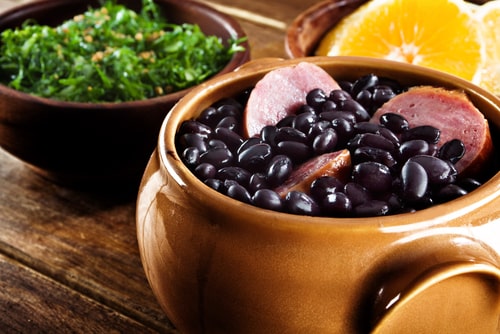
18. Feijoada is the national dish of Brazil which is a stew of beans with beef and pork.
19. Brazilians value family and social connections. Friendship and hospitality are some of the key traits that the local people look for among themselves.
20. Visitors to Brazil are treated with the utmost respect and are admired. Brazilians have the reputation of being one of the most hospitable people in the world.
21. The most popular type of music Brazilians listen to is the ‘Brazilian funk.’ The music has a constant and repeated beat, which never changes. Brazilians sing different songs with the beat and there are at least 1000 such songs that the countrymen couple with the beat. The interesting thing is that the combination never gets old nor does it get boring.
22. Almost 90% of the households in the country have TV sets, and radio is the second most popular source of entertainment and information.
23. Brazil also has the largest number of Japanese people outside of Japan.
24. It is a despairing fact about Brazil that it has a high murder rate.
25. Brazilian Carnival is an annual Brazilian festival held between the Friday afternoon (51 days before Easter) and Ash Wednesday at noon, which marks the beginning of Lent, the forty-day period before Easter. During the festival, more than 2 million people are on the streets every day.
26. The Carnival held in Rio de Janeiro is often cited as the “world’s largest party”.
27. Copacabana beach located at the south end of the city of Rio de Janeiro is a 4 km long beach. The beach is famous for hosting a concert in 1994 that was attended by 3.5 million people. This was the largest gathering for a concert ever.
28. According to media reports, by mid-2007, there were 67 tribes in Brazil who have never had contact with modern man. These semi-nomadic indigenous people have, however, made incredible strides in modern medicine thanks to our knowledge of their use of certain plant life as health-related elixirs.
29. At least 180 languages are spoken in Brazil.
30. Samba music from Brazil from the 18th century is still tremendously popular.
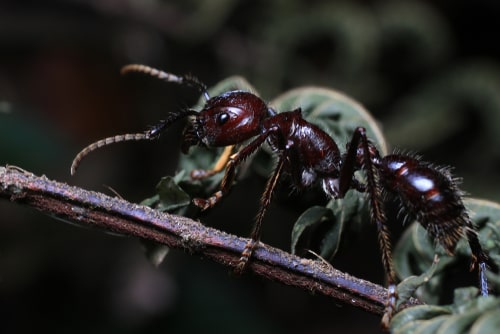
31. It is a ritual in Brazil for boys to bear the pain from Bullet Ants before they are declared adults. Their hands are put in gloves filled with these ants. Boys are required to withstand the pain for at least 10 minutes, and they have to pass this test 20 times before being declared adults.
32. Free sex-change operations are provided by the Brazilian public health system. They recognize this as a constitutional right.
33. Brazilians like to share their drinks and food with others and they are very happy about it.
34. Brazilians are also very optimistic about their future and always believe that tomorrow will be a better day than today.
Brazil facts for kids
35. The name ‘Brazil’ comes from ‘Brazilwood’ – the name of a tree in Brazil.
36. Brazil has a replica of the Statue of Liberty (a copper statue, a gift from the people of France to the people of the United States.)
37. Brazil also has the world’s second-largest black population after Nigeria.
38. Did you know that Brazil became the first South American country ever to host the Olympics in 2016?
39. More than 6 million tourists visit Brazil every year. According to a report, 6.6 million tourists visited Brazil in 2016. The visitors injected a whopping $6.2 dollars into the Brazilian economy. The boost in visitor count in 2016 was due to the Olympic Games held in the country.
40. Oscar Niemeyer designed the capital city of Brasilia. It resembles the shape of an airplane when viewed from the air.
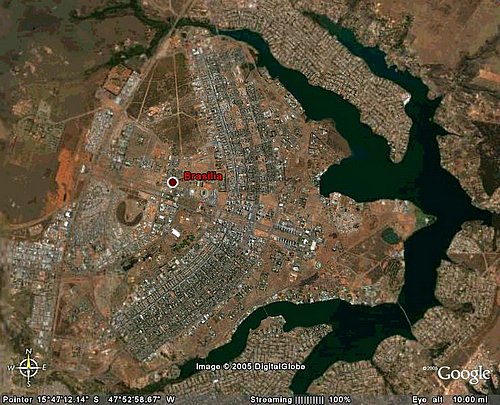
41. ‘Rubber’ made Brazil a wealthy nation during the late 18th century.
42. There are more species of monkeys in Brazil than in any other nation.
43. Brazilian national anthem has two seven-verse stanzas. Interestingly, both the stanzas have the same tune. Brazilian law does not permit you to sing just one stanza, you have to sing both the stanzas.
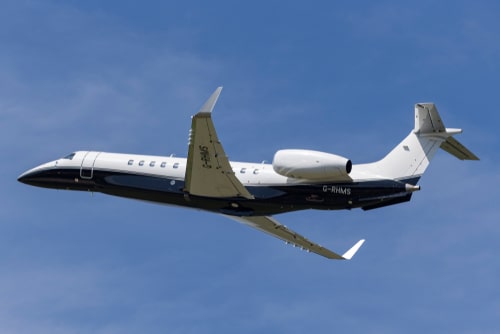
44. Embraer, a Brazilian aircraft manufacturing company is among the world’s top five aircraft manufacturers.
45. The world’s highest vertical cemetery (108 meters tall) is The Memorial Necrópole Ecumênica, in Santos, Brazil. While the world’s biggest cemetery (covers 1485.5 acres and contains millions of bodies) is in Iraq in the city of Najaf.
46. Brazil is the world’s second-largest producer of ethanol fuel.
Flag of Brazil
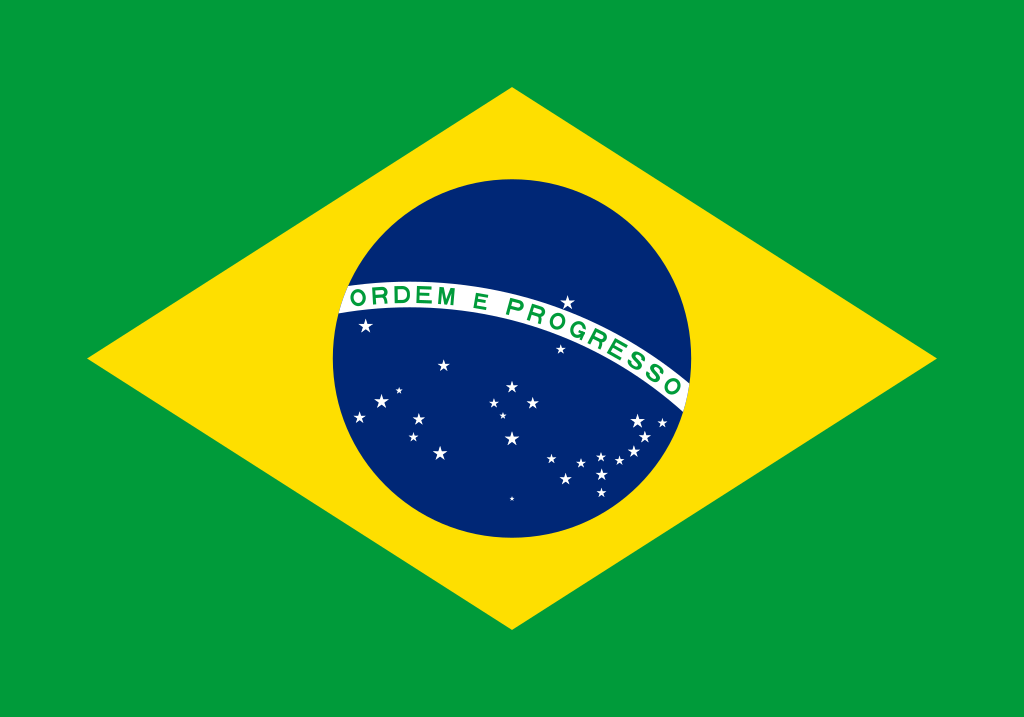
47. In 1946, voting became a right and an obligation to all women.
48. Brazilians drink 5.5 kg per capita per year of coffee while Finland tops the list with 12 kg per capita per year. See the list of nations drinking the most coffee here.
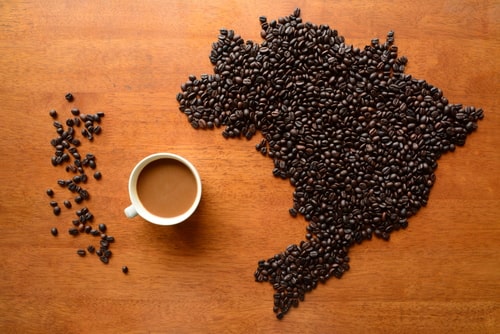
49. Brazil is the leading producer of oranges in the world, which amounts to 30% of the world’s total output.
50. The biggest African city outside Africa – Salvador – is in Brazil.
51. Pele is a Brazilian soccer player who is famous the world over. Brazil has won soccer’s FIFA World Cup five times (1958, 1962, 1970, 1994 and 2002.)
52. Paulo Coelho is a famous Brazilian lyricist and novelist. He was born in Rio de Janeiro, on August 24, 1947.
53. Sand dunes in Brazil can reach a height of 40 meters.
54. Brazil’s first national parks were created in the late 1930s.
55. ‘Silva’ is the most popular surname in Brazil.
56. Brazil has a 60% share of the Amazon’s rain forest. The rainforest is also known as Amazonia or the Amazon Jungle. The rainforest is estimated to contain 390 billion individual trees divided into 16,000 species.
57. Brazil declared itself a republic on November 15, 1889.
58. Brazil has the tenth-largest railway and third-largest roadway network in the world.
59. The largest number of species of mammals, plants and freshwater fish are found in Brazil.
60. Brazil has thirteen cities with a population of more than one million people.
61. Brazil has only three time zones, while France has twelve.
62. The climate is tropical across the majority of Brazil.
63. Brazil is also the seventh largest country by population behind China, India, U.S., Indonesia, Pakistan, and Nigeria.
. . . continue reading on the next page
